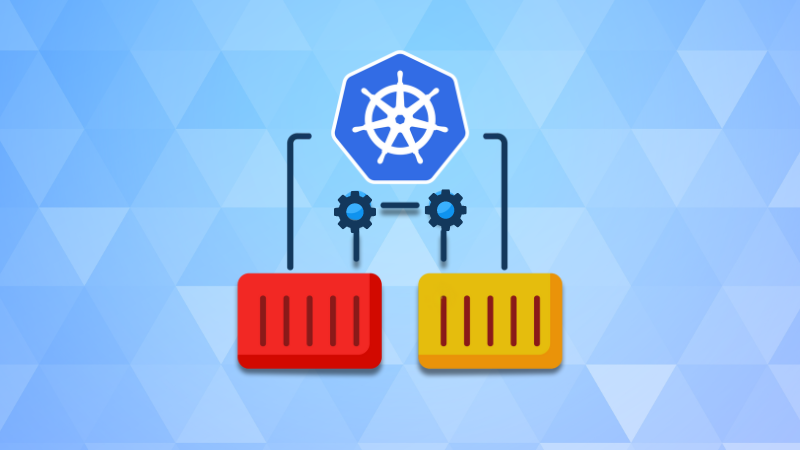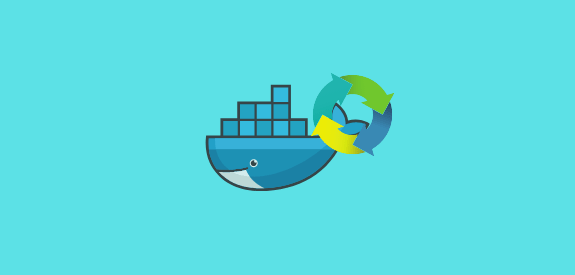Keep Kubernetes Containers Running: Deployment Strategies
Learn practical strategies and commands to ensure your containers in Kubernetes stay up and running, even after failures.
Learn practical strategies and commands to ensure your containers in Kubernetes stay up and running, even after failures.
In Kubernetes, a container's lifecycle is directly tied to its main process. When the main process terminates, Kubernetes interprets this as the container's completion. To maintain a container in a running state, it's essential to have a process that continues indefinitely. This article explores various strategies to achieve this, ensuring your containers remain operational and your applications function as expected.
Kubernetes determines a container's status by its main process. If the process ends, Kubernetes considers the container finished. To keep a container running, you need a process that runs indefinitely.
Here are a few ways to achieve this:
1. Run a Long-Running Process:
The simplest method is to have a process in your container that doesn't exit. This could be a web server, a background worker, or even a simple script:
while true; do
sleep 1
done2. Use a Process Manager:
Tools like supervisord or tini can manage processes within your container. If your main process crashes, these tools will restart it, ensuring the container stays alive.
3. Leverage Init Containers:
For tasks that need to run before your main application starts, use init containers. They run to completion and can perform setup tasks like database migrations or file system modifications.
4. Consider Sidecar Containers:
If you need a supporting process running alongside your main application, use a sidecar container. This is useful for tasks like logging or proxying.
Important Considerations:
sleep infinity keeps a container running, it's not efficient. Use a meaningful process.By understanding how Kubernetes manages container lifecycles and employing these techniques, you can ensure your containers run reliably and as intended.
This document provides code examples for keeping Kubernetes containers running. It demonstrates how to run a long-running process using a Flask web server, utilize process managers like Supervisord and Tini, leverage init containers for setup tasks, and employ sidecar containers for logging. The document also emphasizes the importance of avoiding empty loops, defining resource limits, and configuring liveness and readiness probes for container health monitoring.
This document provides code examples for the techniques mentioned in the article to keep Kubernetes containers running.
1. Run a Long-Running Process:
Instead of an empty loop, here's an example of a simple Python web server using Flask:
from flask import Flask
app = Flask(__name__)
@app.route('/')
def hello_world():
return 'Hello, World!'
if __name__ == '__main__':
app.run(host='0.0.0.0', port=80)This code will start a web server listening on port 80.
2. Use a Process Manager:
a) Using Supervisord:
First, install Supervisord in your Dockerfile:
RUN apt-get update && apt-get install -y supervisorThen, create a supervisor configuration file (e.g., supervisord.conf):
[supervisord]
nodaemon=true
[program:myapp]
command=python /app/main.py
autostart=true
autorestart=true
Finally, start Supervisord in your Dockerfile's entrypoint:
CMD ["/usr/bin/supervisord", "-c", "/etc/supervisord.conf"]b) Using Tini:
Use the tini image variant provided by Docker Hub:
FROM golang:1.18-alpine AS builder
# ... your build steps ...
FROM alpine:latest
ENTRYPOINT ["/tini", "--"]
CMD ["/app/your_app"]3. Leverage Init Containers:
Here's an example of using an init container to create a database before starting the main application:
apiVersion: v1
kind: Pod
metadata:
name: myapp-pod
spec:
initContainers:
- name: init-mydb
image: mysql:5.7
command: ["sh", "-c", "mysql -u root -p$MYSQL_ROOT_PASSWORD -e 'CREATE DATABASE IF NOT EXISTS mydb;'"]
env:
- name: MYSQL_ROOT_PASSWORD
valueFrom:
secretKeyRef:
name: mysql-secret
key: password
containers:
- name: myapp
image: myapp:latest
# ... other configurations ...4. Consider Sidecar Containers:
Here's an example of using a sidecar container for logging:
apiVersion: v1
kind: Pod
metadata:
name: myapp-pod
spec:
containers:
- name: myapp
image: myapp:latest
# ... other configurations ...
- name: log-collector
image: fluentd:latest
volumeMounts:
- name: shared-logs
mountPath: /var/log/myapp
volumes:
- name: shared-logs
emptyDir: {}Important Considerations:
resources:
requests:
memory: "64Mi"
cpu: "250m"
limits:
memory: "128Mi"
cpu: "500m"livenessProbe:
tcpSocket:
port: 80
initialDelaySeconds: 15
periodSeconds: 20
readinessProbe:
httpGet:
path: /health
port: 80
initialDelaySeconds: 5
periodSeconds: 10By implementing these techniques and considering the important factors, you can ensure your Kubernetes containers run reliably and efficiently.
This section provides additional context and considerations related to keeping Kubernetes containers running.
Understanding Container Lifecycle:
Choosing the Right Approach:
Best Practices and Considerations:
Beyond the Basics:
By understanding these nuances and employing the appropriate techniques, you can ensure your Kubernetes containers operate reliably and efficiently, supporting your application's needs.
Kubernetes relies on a container's main process to determine its status. This article outlines strategies for maintaining continuously running containers:
Methods for Continuous Container Operation:
supervisord or tini to manage and restart your main process if it fails, ensuring container uptime.Essential Considerations:
By understanding these techniques and considerations, you can ensure the reliable and intended operation of your Kubernetes containers.
To ensure your Kubernetes containers run reliably, you must understand that their lifecycle is tied to their main process. When the main process ends, Kubernetes considers the container finished. To maintain a container's running state, employ techniques like running long-running processes, using process managers like supervisord or tini, leveraging init containers for pre-application setup, and using sidecar containers for auxiliary tasks. Remember to avoid inefficient empty loops and prioritize meaningful processes. Define resource requests and limits to manage resource allocation, and implement liveness and readiness probes to monitor container health and communicate with Kubernetes. By understanding and applying these strategies, you can ensure your Kubernetes containers operate reliably and efficiently, fulfilling your application's requirements.
 How can I keep a container running on Kubernetes? | by Harold ... | To keep a container running on Kubernetes, you need to ensure that the container’s main process doesn’t exit, as Kubernetes considers a…
How can I keep a container running on Kubernetes? | by Harold ... | To keep a container running on Kubernetes, you need to ensure that the container’s main process doesn’t exit, as Kubernetes considers a… How to Keep a Container Running on Kubernetes | In a situation where you have to keep a container running? Here are three methods to achieve that in Kubernetes.
How to Keep a Container Running on Kubernetes | In a situation where you have to keep a container running? Here are three methods to achieve that in Kubernetes. Keep a container running for troubleshooting on Kubernetes | Diego ... | Mar 22, 2019 ... Keep a container running for troubleshooting on Kubernetes ... This is just an example about how to keep running a pod without exit, this helps to ...
Keep a container running for troubleshooting on Kubernetes | Diego ... | Mar 22, 2019 ... Keep a container running for troubleshooting on Kubernetes ... This is just an example about how to keep running a pod without exit, this helps to ... Need help with connecting to VPN protected URL from a container ... | Hello Folks I need help. I’m using Kubernetes (version# 1.10) which comes as part of Docker Desktop (version# 18.09.2) for my local Windows 10. I’ve setup Jenkins container running in a pod. I need to access a bitbucket URL which is protected by VPN from the build pipeline I’ve created on Jenkins. I’m connected to VPN from my local system using Cisco VPN client when running Kubernetes on my local. However, I keep getting “Destination Host Unreachable” error in Jenkins for the bitbucket URL. I’v...
Need help with connecting to VPN protected URL from a container ... | Hello Folks I need help. I’m using Kubernetes (version# 1.10) which comes as part of Docker Desktop (version# 18.09.2) for my local Windows 10. I’ve setup Jenkins container running in a pod. I need to access a bitbucket URL which is protected by VPN from the build pipeline I’ve created on Jenkins. I’m connected to VPN from my local system using Cisco VPN client when running Kubernetes on my local. However, I keep getting “Destination Host Unreachable” error in Jenkins for the bitbucket URL. I’v... Can k8s or k8s API build image with Dockerfile? - Discuss Kubernetes | Hi there, I’ve tried to read the docs as much as I can but this question is more about API and I’m not an expert in programming to do the API, so sorry if it bothers you:( For this one suppose I use k8s myself in SSH. Imagine I only have a Dockerfile. Can I build an image with k8s command line? Or I should first run docker build ... and then add the name of new image in yaml file? Suppose I use k8s API. Can this API work with docker build and then do something in my yaml file? Or I should fir...
Can k8s or k8s API build image with Dockerfile? - Discuss Kubernetes | Hi there, I’ve tried to read the docs as much as I can but this question is more about API and I’m not an expert in programming to do the API, so sorry if it bothers you:( For this one suppose I use k8s myself in SSH. Imagine I only have a Dockerfile. Can I build an image with k8s command line? Or I should first run docker build ... and then add the name of new image in yaml file? Suppose I use k8s API. Can this API work with docker build and then do something in my yaml file? Or I should fir... How To Keep Docker Container Running For Debugging | This post will look at how to keep a Docker container running for testing, debugging, and troubleshooting purposes.
How To Keep Docker Container Running For Debugging | This post will look at how to keep a Docker container running for testing, debugging, and troubleshooting purposes. Init Containers | Kubernetes | This page provides an overview of init containers: specialized containers that run before app containers in a Pod. Init containers can contain utilities or setup scripts not present in an app image.
You can specify init containers in the Pod specification alongside the containers array (which describes app containers).
In Kubernetes, a sidecar container is a container that starts before the main application container and continues to run. This document is about init containers: containers that run to completion during Pod initialization.
Init Containers | Kubernetes | This page provides an overview of init containers: specialized containers that run before app containers in a Pod. Init containers can contain utilities or setup scripts not present in an app image.
You can specify init containers in the Pod specification alongside the containers array (which describes app containers).
In Kubernetes, a sidecar container is a container that starts before the main application container and continues to run. This document is about init containers: containers that run to completion during Pod initialization.